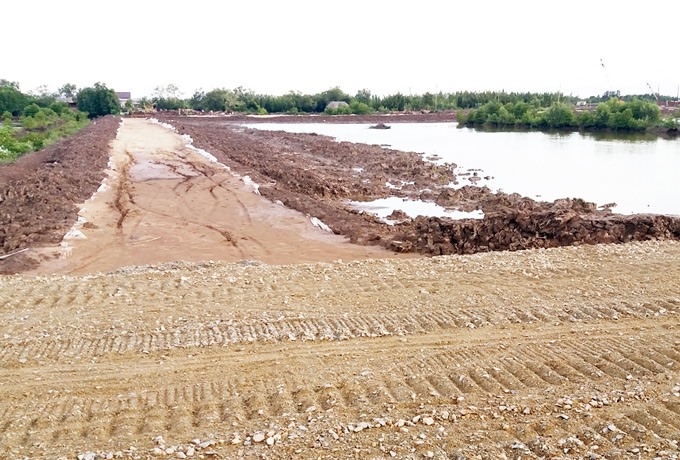 Economy
Economy

The southernmost province of Cà Mau has established a so-called soil bank composed of mud collected from rivers to make alternative materials for sand in construction.
 |
| An area of 11ha has been cleared in Trần Thới Commune in Cái Nước District in Cà Mau Province to gather soil deposits for a newly established “soil bank”.—Photo danviet.vn |
CÀ MAU – The southernmost province of Cà Mau has established a so-called soil bank composed of mud collected from rivers to make alternative materials for sand in construction.
The province needs around 600,000 cubic metres of sand to use in urgent resettlement projects and coastal embankment construction, according to local authorities.
Provinces in the (Cửu Long) Delta face a shortage of sand, which has caused a steep increase in sand prices.
Tô Quốc Nam, deputy director of the province’s Department of Agricultural and Rural Development, said Cà Mau has 290,000ha under shrimp farming. Local farmers usually get rid of dirt and mud in their shrimp ponds by dumping it into the river, affecting water flow.
The soil bank will help save the province the expense of dredging the river as it will collect dirt and mud and store it on land covering 11ha in Trần Thới Commune in Cái Nước District.
He said the province had contacted scientists to collect samples at the bank and seek ways to make new materials from these deposits to replace sand for ground leveling.
Before the soil bank was established, officials from the department visited a similar model in the Netherlands which has proven to be effective.
The Dutch Government set up a team that travels around the country to dredge rivers and bring dirt and mud back to the soil bank.
The deposits are used to make organic fertiliser and for ground leveling and construction.
After the visit, the department received VNĐ20 billion (US$875,000) funding from the World Bank to establish the bank. This is the first soil bank of its kind in the Delta.
The province is preparing for the collection of dirt and mud to send to the bank.
With 11ha of land used for storage, Cà Mau can earn around 3 million euros a year, Nam was quoted as saying on online news site danviet.vn.
“As the scarcity of sand will likely last a long time, the establishment of a soil bank is very necessary,” he said.
A report by the Department of Construction Materials of the Ministry of Construction says the demand for sand in 2015 stood at 92 million cubic metres, and will surge by some 40 per cent to about 130 million in 2020. — VNS




